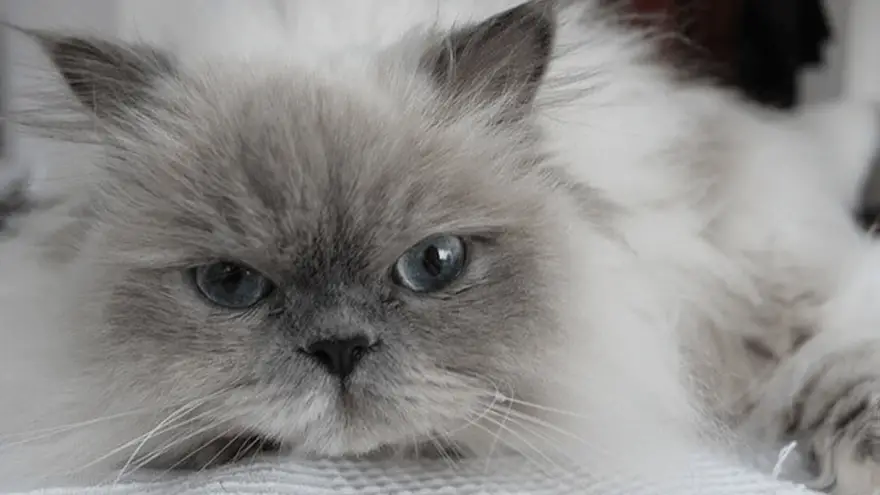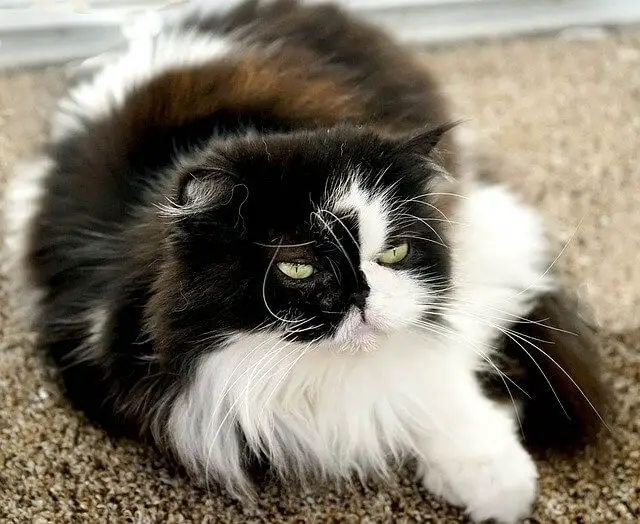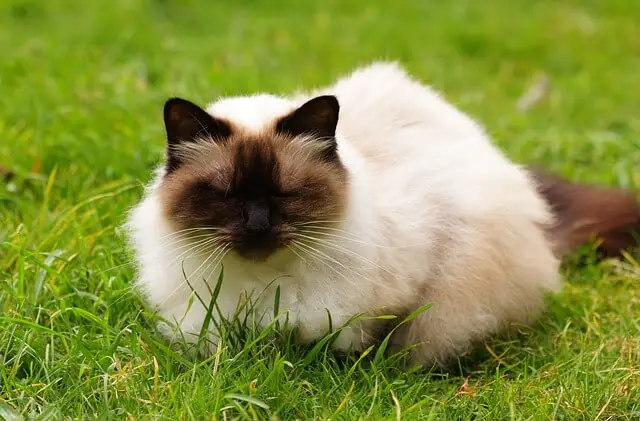
Himalayan
The Himalayan is one of the most popular purebred cat breeds in the US, and it is pretty easy to see why they’re so popular. These cats have soft coats that are a joy to cuddle with. They are very charming and look absolutely stunning. If you’re looking for a new feline companion, you should give the Himalayan a serious thought. Here’s what all cat owners need to know about this breed.

Length:
17 - 19 in

Weight:
7 - 12 lb

Origin:
USA

Life Expectancy:
9 - 15 years
Breed History
Some cat breeds occurred completely naturally, and some came to life through human intervention. The Himalayan breed came to life through human intervention. More precisely, humans purposely crossbred two cat breeds to achieve specific traits. In the case of the Himalayan breed, the goal was to achieve color points and blue eyes in Persians. To achieve that, cat breeders crossed Persians with the Siamese.
The creation of the Himalayan is credited to Virginia Cobb and Harvard Medical School researcher Clyde Keeler. After a few planned crossings, they produced longhaired cats with desired characteristics. The first-ever Himalayan kitten was called Newton’s Debutante. Some cat registries accepted this breed as a variety of the Persian breed, and some registered it as a separate breed.
Cat Breed Characteristics
The first thing most of us will notice is the Himalayan’s amazing coat. However, these cats have cobby bodies and short legs. They can have two “types” of faces. Some have really flat faces like the Persian, and some have the “doll-face” (the more traditional shape). Here are other dominant traits Himalayan cats have.
Coat
The first thing we need to mention is the Himalayan’s coat. These cats inherited the Persian’s coat type. That means they have long, double coats that must be properly maintained. Regular grooming is a must.

Coat color
These cats were created because breeders wanted to achieve specific coat colors in the Persian breed. The modern-day Himalayans come in blue, lilac, seal, red, chocolate, and cream; all colors come with a pointed pattern.
Size
The Himalayan cats are considered medium-sized. They appear a lot larger than they actually are because of their thick, long coats. Most adult cats weigh 7 - 12 pounds and reach 17 - 19 inches.
Temperament
If you’re looking for a sweet family companion that is pretty docile and happy with a slower pace of life, you should get a Himalayan. These cats make absolutely fantastic pets to those with similar energy to them. These cats are great with kids that know how to interact with them. They are not that playful, but they are intelligent and pretty cuddly. However, they are not friendly to everyone. They will reserve their affection to their family members and a few guests that earned their trust.

Health
Most cat breeds have breed-specific health problems. Despite careful breeding plans, the Himalayan is prone to some health problems. These cats were created by crossing two other breeds, and physical characteristics are not the only thing they inherited. Some of the health issues these cats are prone to are;
- Flat face syndrome - Himalayans are brachycephalic, making them prone to breathing issues and heat sensitivity.
- Dental malocclusions - The cat’s teeth don’t mesh together correctly.
- Feline hyperesthesia syndrome - A central nervous system disorder.
- Polycystic kidney disease - A disease that causes kidneys to grow a large number of cysts.
- Seborrhea oleosa - This is a skin disease that can cause itching and hair loss.
World Cat Finder Team

Updated at09.01.2022.

Share